Buying inflatable boats isn’t as simple as it seems. Not all boat models have the same performance on the water. If you choose wrong, you may end up terribly disappointed after the first ride. That’s why it’s so important to consider all the basic features of the product before buying.
However, if you aren’t an expert on inflatable boats and aren’t quite sure of what you’re looking for, don’t worry. In this buying guide you’ll learn the 15 basic features you should consider in order to find the best inflatable boat based on your own needs.
15 Things You Should Know Before Buying Inflatable Boats
1. Popular types
- Roll-up floor
Roll-up floor boats are the cheapest and easiest to set-up. They’re also known as slat floor boats due to their peculiar floor configuration. They have a limited durability and are very prone to damage. However, they can be rolled-up after being deflated and stored in very little spaces.
These kinds of boats are available in a wide variety of sizes and prices. The smallest and cheapest ones can cost less than $30. However, most advanced models can exceed $1000.
Roll-up boats are more suitable for short trips. During long excursions, the exposure to high temperatures and UV-rays would be longer, increasing the probability of damage.
Roll-up models have no keel, because the floor is too weak to support one. This makes them less maneuverable and slower, especially on troubled waters.
- Rigid floor
Hard floor boats use a V-shaped keel to be faster and more stable on the water. The hard floor is usually made of hardwood or aluminum. These boats have a lower center of gravity, so they don’t easily lose balance with high speeds. So, they can be safely driven by motor power.
- Inflatable floor
Air floor boats provide a soft and flexible surface to rest your feet. They’re also lightweight, compact and easy to store. Air floor boats are perfect for solo adventures, because they can be set-up by a single person. However, they’re very prone to punctures, so you should keep them away from sharp objects like knives and fishing hooks.
Some models include an inflatable keel to provide higher stability on the water. But, despite of their many pros, they tend to drift when the wind blows hard.
- RIBs
Rigid Inflatable Boats have a solid shell that allows them to keep their shape with high impacts. They combine the best features of inflatable and fiberglass boats. They’re heavier and less portable than traditional inflatable boats, but their overall performance on the water is far superior.
RIBs with V-shaped keels are extremely fast and can move trough troubled waters and big waves without trouble.
- Console RIBs
Console RIBs include a sophisticated steering system, controlling all the main functions of the boat from a single point. More luxurious models may include a sound system, jet engines and leather seats.
Console RIBs are considerably heavier and provide less free space than standard RIBs. Also, they require a more complex gear and logistics to be transported out of the water. Console RIBs are too expensive, with starting prices above $9000.
2. Most common materials
Most inflatable boats on the market are made of PVC or Hypalon. The main differences between both materials are in their resistance and durability. For example, PVC is lightweight and relatively strong. PVC boats are also easy to fold and can be stored in reduced spaces. Best ones are reinforce with threads woven into the fabric.
But maybe the most interesting feature of PVC boats is their low price. So, they’re the best choice for people with limited budgets.
On the other hand, Hypalon is thicker and more resistant than PVC. It can withstand high impacts, UV rays, heat and high air pressure. Is by far the best material for heavy duties. So, if you intend to use your boat too often, Hypalon is the best choice. Best of all, Hypalon boats don’t need to be deflated after each use as is recommended with PVC boats.
So your final decision will depend on your current budget and the kind of use you’ll give to your boat.
3. Design and material of the deck
The deck of your boat is the surface on which you support your body weight and rest your feet. For maximum comfort, the deck should be strong and stable. On inflatable boats there are 2 main types of decks: rigid decks and air decks.
Rigid decks are made of interlocked aluminum or plywood boards. These kinds of decks provide superior structural rigidity, less flexion and less friction.
On the other hand, air decks provide a padded and soft surface for your bare feet. Air decks also cushion high impacts, allowing a more comfortable ride. However, when air decks get wet, tend to be slippery and potentially dangerous.
4. Maximum weight limit
Before your make an order, make sure to check out the maximum weight limit of the boat. You can find this feature on the user manual under the name of “passenger capacity” or “max load capacity.” The passenger capacity indicates the maximum number of people the boat can carry on a trip. The max load capacity is the total sum of weights of passengers, food and gear.
5. Design of the hull
- Flat hull
Flat hull boats don’t have keels, making them unstable at high speeds. These kinds of boats are more suitable for short trips on calm waters.
- V-hull
V-hull boats use inflatable keels to provide higher directional stability at high speeds. Usually, the keel is attached to the hard or inflatable deck of the boat.
- Deep V-hull
Deep V-hulls are rigid and usually made of hardwood or aluminum. They submerge deeper into the water, working as blades to cut big waves. This allows a superior stability in contrast to inflatable keels.
6. Power source
Most inflatable boats use paddles to impulse trough water. However, you can consider buying a paddled boat with a motor mount. That way, you can install an electric or gas powered engine in the future. Make sure the motor mount is made of durable and water resistant materials, such as marine-grade aluminum or plywood.
Usually, the user manual indicates the maximum motor horsepower that the boat can admit.
7. Design of the boat
- With keels
Boats with keels are much more stable on the water and can easily move trough big waves. These kinds of boats can be driven by motor power without risks of accidents. Keels help boats to keep on the horizontal plane and reduce water resistance.
- Without keels
Boats without keels are the cheapest ones. They have a simple design and can be set-up in short time. They’re also easier to deflate and store. However, they’re unstable on troubled waters and tend to drift very easily.
8. Size of the tube
For maximum stability and floatability, the tubes of the boat should be big. Boats with small tubes tend to bump and splash too much water at high speeds. Big floating tubes provide a more comfortable ride and superior performance. However, the bigger the tube, the more expensive the boat will be.
9. Set-up
For many anglers, time is gold. Some kinds of fish get out of their hiding places at certain hours of the day. For that same reason, the inflatable boat should be easy to set-up, so you can be on the water as quick as possible. Best models can be set-up by a single person and don’t require fancy tools during the process.
10. Safety and comfort
Above all, your inflatable boat should be safe and comfortable. So, it should remain stable on the water even if the wind blows hard. For that reason, it’s recommended that the boat has a wide sailing area and a hard deck.
For maximum comfort, the boat should have enough free space to extend your legs while you’re fishing. Also, the seats should be cushy and have wide back supports.
11. Pump
Before buying an inflatable boat, make sure it also includes an adequate air pump. It should be powerful enough to deliver a high air volume in no time. The pump should also include a high-pressure gauge and a pressure adjustment system.
12. Portability
Inflatable boats can be a more interesting alternative to traditional hard case boats due to their portability and light weight. Inflatable boats can be folded and stored in small spaces such as car trunks and backpacks. For that reason, they’re the favorite of outdoor adventurers.
Inflatable boats are also perfect for fishing lovers, because they’re easy to set-up and let you get into the water in no time. They also provide the necessary space to carry coolers and fishing tools.
13. Storage
Inflatable boats can be stored in very little spaces. This feature makes them ideal for people living in apartments or rented rooms. Best of all, they don’t required boat trolleys or racks to be transported as it happens with rigid case boats.
14. Additional accessories
When choosing a new inflatable boat, you can’t settle for the same basic features you may find in any generic model. You should always look for something more. Here’s a list with some additional features you should consider:
- Air pump
- Carrying bag
- Lifting points
- Repair kit
- Oars
- Multiple air chambers
- Inflatable keel
- Fins and tabs
- Transporting wheels
- Extended tiller
All these additional improvements can make your life easier and take a simple boat trip to a whole new level.
15. Interesting features
- Multiple Air Chambers
Multiple air chambers improve the floatability of your boat, providing maximum stability on the water. Best inflatable boats use 3 different air chambers for this purpose.
- Tackle storage
Best inflatable boats come with a dedicated space on the deck for storing fishing tools and other gear.
- Floor Boards/Panels
Rigid decks are much better than inflatable ones, because they’re more stable and let you to firmly stand on your feet while a big fish is pulling the thread of your fishing rod. Best rigid decks include special coatings to better resist corrosion caused by salt water.
- Rod Holders
This feature is especially useful for anglers who need a safe and stable space to place their fishing rods. If your inflatable boat already comes with rod holders, you won’t have to buy new add-ons.
- Seating
Choosing the right seat is maybe one of the most important decisions you should take before buying an inflatable boat. There are 2 types of seats for boats: inflatable seats and rigid seats.
Inflatable seats are soft and cushy, providing the most comfortable support for your back. They don’t add extra weight to the boat and can be easily deflated to occupy less storage space. However, they aren’t as stable as rigid seats.
On the other hand, rigid seats provide superior stability and better support for fishing. However, they considerably increase the weight of the boat and can’t be folded to take up less space.
- USCG Rated
U.S. Coast Guard has the highest quality standards for the manufacturing of inflatable boats. So, if you want to make a good money investment, always opt for a USCG rated model. That way, you can be sure that you’re taking home a durable, resistant and reliable product.
Conclusion
After reading all these information, now you’re better prepared to make a good decision. You just need to consider some important aspects like boat design, materials, weight capacity, power source and other to find the most appropriate model for you.
If you carefully follow each of the tips we just gave you, buying inflatable boats will be a piece of cake for you. Always wear protective clothing when you’re out on a fishing expedition. Also, try to keep a good GPS device with you when fishing alone.
FAQ
1. What is the average lifespan of inflatable boats?
A. It all depends on you. If you give the appropriate treatment to your boat, clean it after each use and keep it away from sharp objects, it can last 5-10 years.
2. Which are the benefits of buying a PVC boat?
A. PVC boats are cheap, lightweight, portable and easy to store. They don’t take up too much space and are perfect for people living in apartments or rented rooms.
3. Is it necessary a license to drive a boat?
A. It all depends on the laws of the place where you live. In some states of the United States a special permission is required to drive a boat on state waters. In other places, boat drivers need to complete an education course.
4. Are inflatable boats safe on the ocean?
A. Not all. The boat must be resistant to high impacts, have a keel, a wide sailing area and big air tubes in order to be safe on the ocean.
5. Are inflatable boats suitable for fishing?
A. Not all. The boat must have a comfortable seat, rod holders, enough free space to extend your legs and a rigid deck in order to be suitable for fishing.

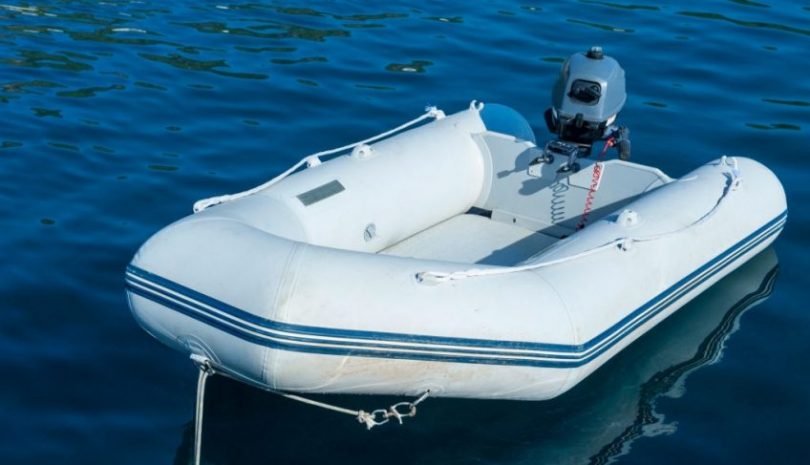
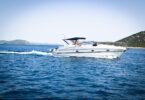

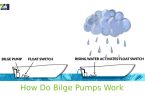
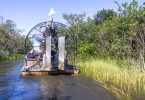
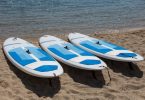

Leave a Comment